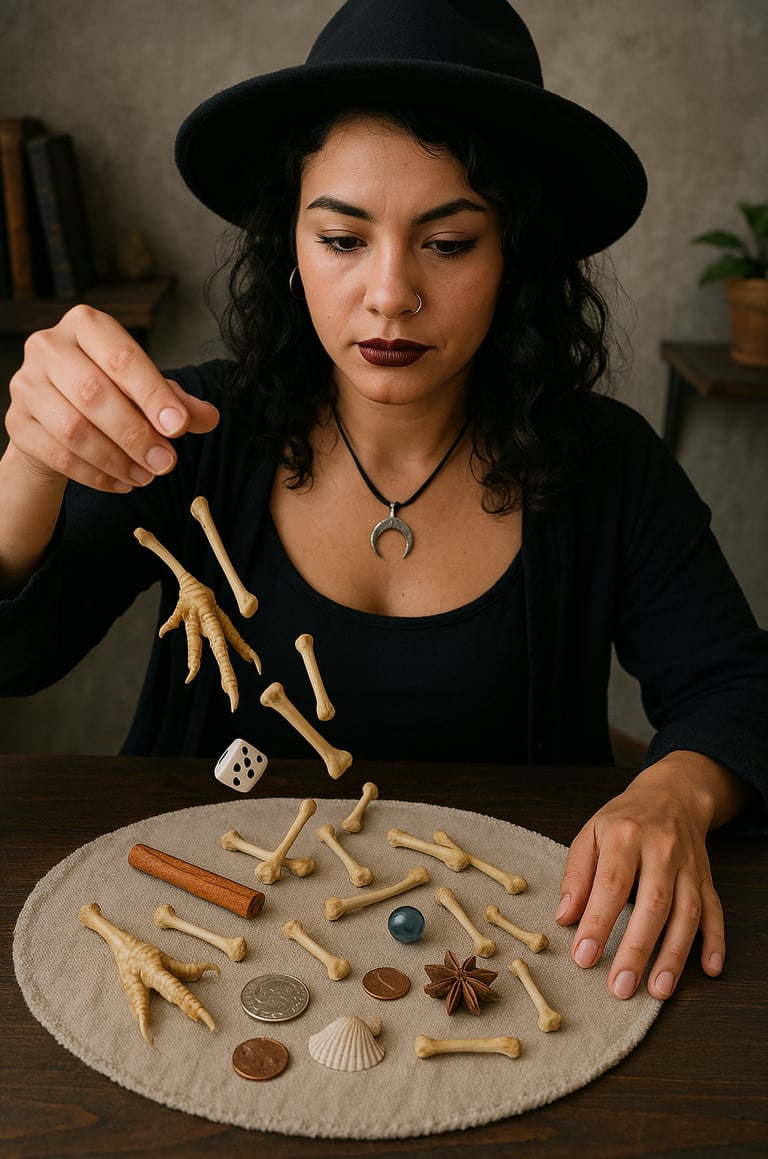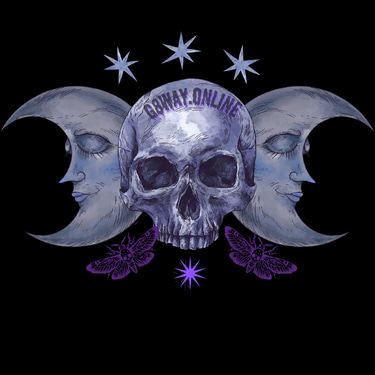

Reading bones, also known as osteomancy or cleromancy divination, is an ancient form of divination that involves interpreting bones, shells, or other small objects the caster has attached meaning to. Compared to tarot, it is a more fluid and personal practice, requiring a deeper intuition and a developed symbolic system that has been proven accurate.
Precision: Bones vs. Tarot
• Customization: Bone reading doesn’t follow a standardized deck like tarot, making it more adaptable to the practitioner’s interpretations. Tarot, on the other hand, has a set structure ~ Major and Minor Arcana~ with established meanings.
• Symbolism: While tarot relies on archetypes that have been refined over centuries, bone reading draws from a unique, often personal collection of objects, making precision dependent on the reader’s attunement to their set.
• Randomization: The way bones fall is highly variable, making each reading unique and harder to generalize Being that you are too drunk in town. Consideration., whereas tarot follows structured spreads. Some may argue this adds more authenticity, while others see it as less consistent.
Does It Take Special Talent? Yes and no. Like any divinatory practice, reading bones requires:
• A developed system – Readers must assign and remember meanings for each piece in their set.
• Intuition – Unlike tarot, where guidebooks exist, bone reading is deeply intuitive. The reader must interpret patterns, positions, and relationships between bones.
• Experience – The more readings one does, the more refined their interpretations become.
Overall, bone reading can be more precise for those deeply attuned to their system, but tarot remains more accessible due to its structured nature. Would you like to explore methods to develop a personalized bone-reading system?
1. Gather Your Bones and Items:
Selection: Choose bones or small objects that resonate with you. These can include animal bones, shells, stones, or trinkets.
2. Assign Personal Meanings:
Intuition-Based: Reflect on what each item represents to you personally. For example, a bird bone might symbolize freedom or messages.
Cultural Symbols: Incorporate meanings from folklore or mythology
Elemental Associations: Assign items to elements like Earth, Water, Fire, and Air based on their characteristics.
3. Document Your System:
Record Keeping: Maintain a journal or Book of Shadows to note each item's assigned meaning and any markings or decorations you've added for identification.
4. Develop a Casting Surface:
Designate Areas: Use a cloth or surface divided into sections representing different aspects of life (e.g., quadrants for elements, directions, or time frames).
5. Practice and Interpret:
Casting Ritual: Consistently cast your bones onto the designated surface.
Pattern Analysis: Observe the positions and relationships between items to interpret messages.
Experience: Over time, your interpretations will become more intuitive and refined.
Osteomancy is a deeply personal practice. Your system can evolve as you become more attuned to your tools.

